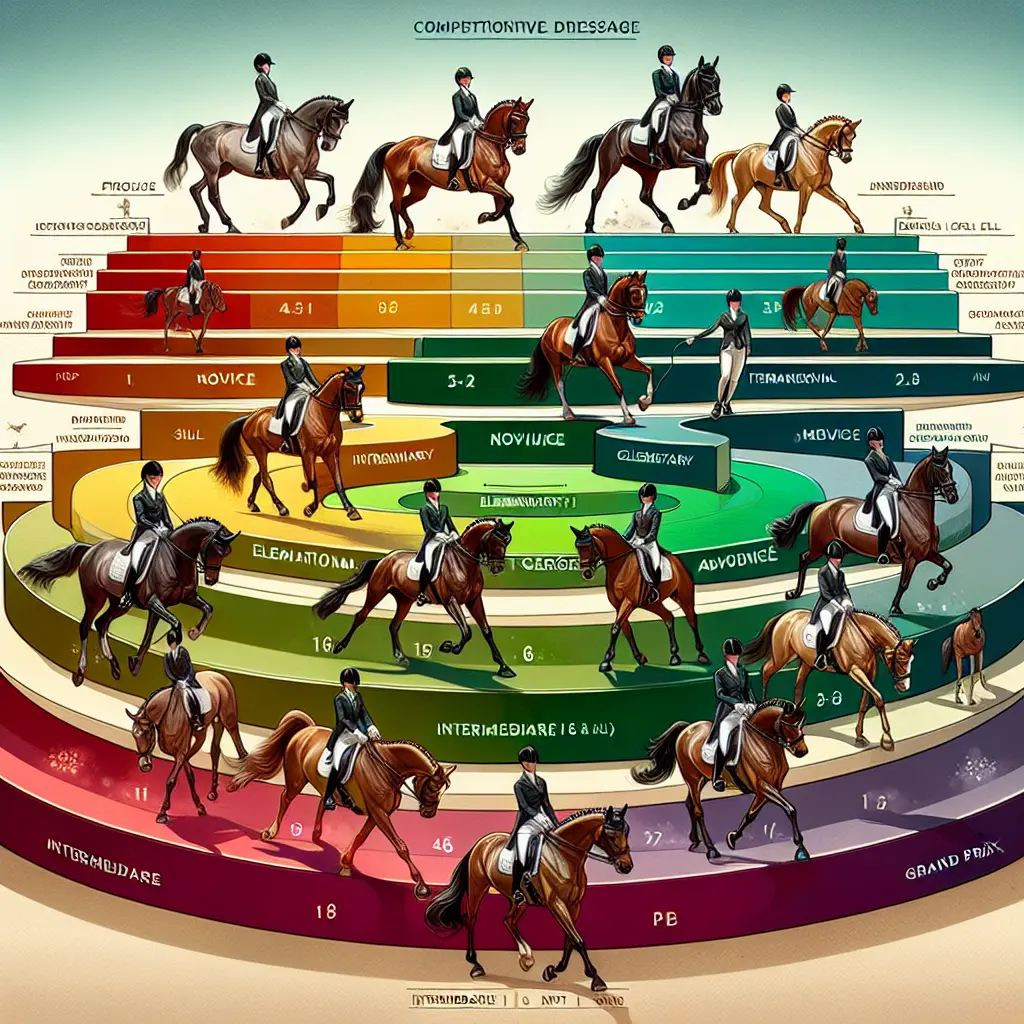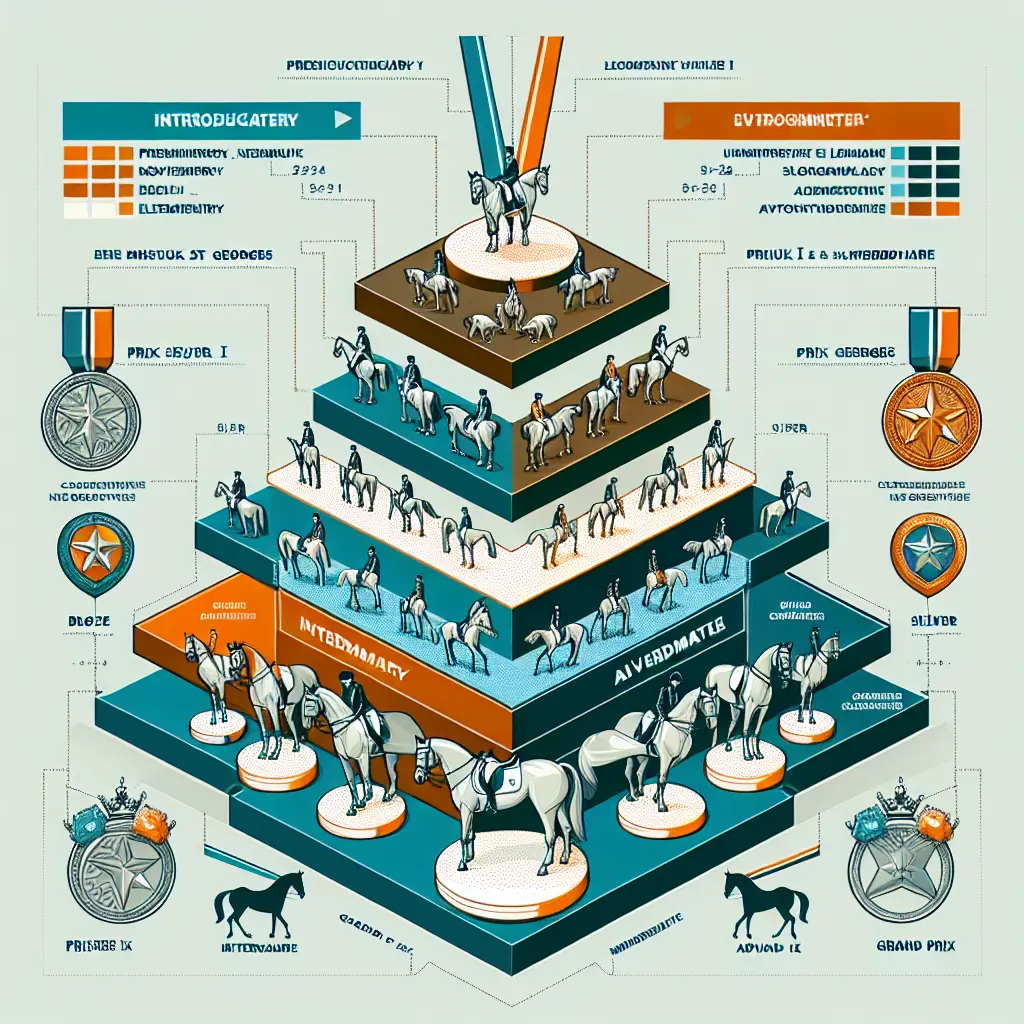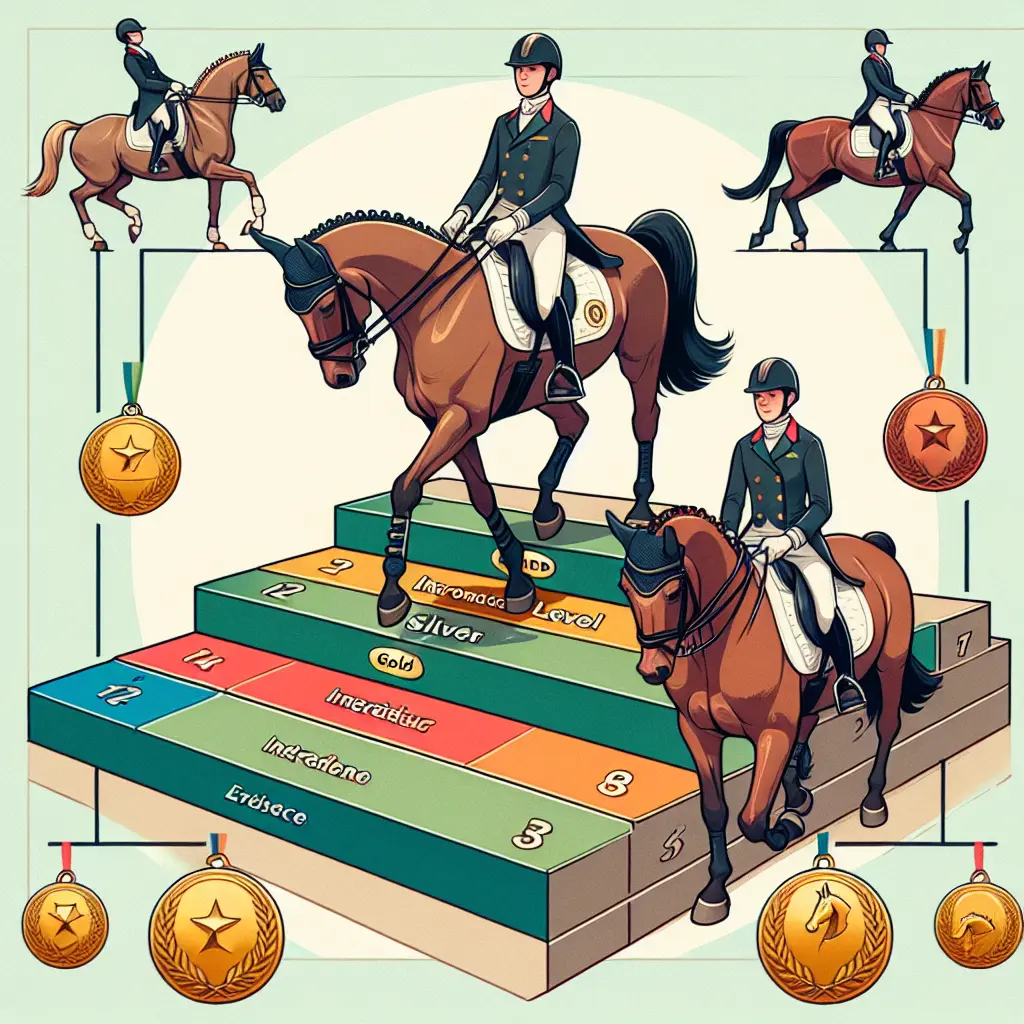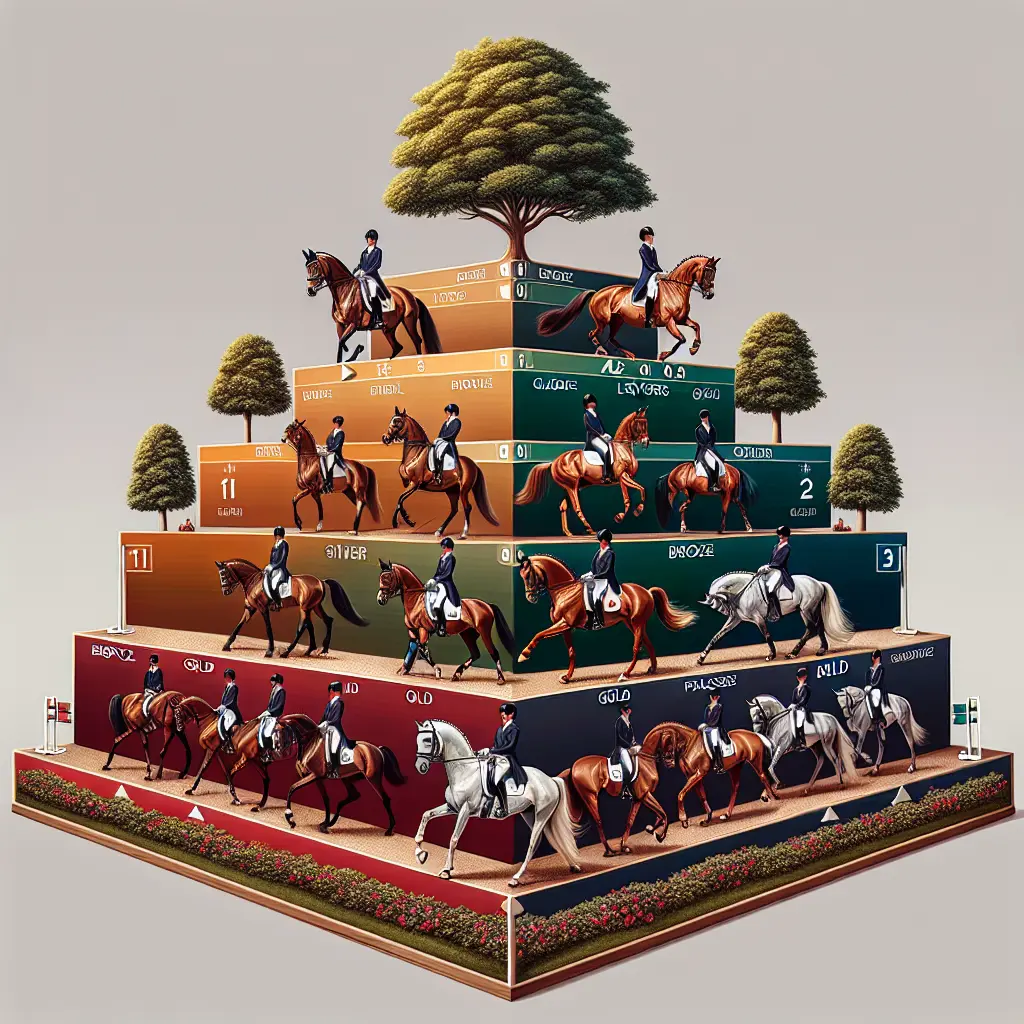Decoding the Dressage Levels: Understanding Bronze, Silver, and Gold in Competitive Equestrian Sports
Dressage, an art form in the world of equestrian sports, is a harmonious dance between horse and rider. It demands precision, elegance, and a deep understanding of one's equine partner. As with many disciplines, competitive dressage is structured into various levels with each level reflecting different skill and experience levels of both the rider and horse. In particular, dressage levels are broken down into Bronze, Silver, and Gold sections, offering a pathway for riders to progress and develop. Let's dive into these levels and unravel what they entail.
Introduction to Dressage Levels
Dressage has several structured levels that challenge various skills and capabilities between horse and rider. The journey is a gradual progression from basic skills to intricate movements. Here’s a brief overview:

- Introductory: Focuses on basic walk and trot movements.
- Preliminary: Incorporates canter and seamless transitions.
- Novice: Introduces pace lengthening and intricate patterns.
- Elementary: Requires balanced and controlled maneuvers.
- Medium: Involves collected and extended paces.
- Advanced Medium: Preparation for higher-level complexity.
- Advanced: Includes movements like pirouettes.
- Prix St Georges: Steps toward the top levels of dressage.
- Intermediare I & II: Refines the execution of complex movements.
- Grand Prix: The peak, showcasing complex movements such as piaffe.
Understanding Bronze, Silver, and Gold Sections
Within each level, the breakdown into Bronze, Silver, and Gold sections is pivotal for ensuring fair competition. Here's what they represent:

- Bronze: Ideal for newcomers and beginners at a given level [1].
- Silver: For those with more experience and proficiency at the current level [2].
- Gold: Meant for competitors who have mastered the requisite skills, occasionally for those with higher experience but on a novice horse [3].
The Path to Dressage Medals
In the U.S., the United States Dressage Federation (USDF) awards medals based on scores achieved in competition. Bronze medals are awarded for qualifying scores at Training to Second Levels, while Silver medals require Fourth Level to Prix St Georges proficiency. Gold represents the pinnacle of dressage achievement. These awards recognize dedication and excellence within the dressage community.
Achieving Balance and Harmony

Dressage isn't just about the aesthetics; it's a rigorous sport testing the mental and physical agility of both rider and horse. The levels and sections act as a guide path for evolving skills and fostering a deeper connection.
Training Regimens: What It Takes
Riders often turn to specialized horse supplements and equipment to maintain the welfare of their horses, ensuring they are able to perform at their peak.
Succeeding in Competitive Dressage

A combination of skill, the right equestrian gear, and focused training forms the backbone of success in dressage competitions.
Advancements in Training Techniques
With evolving techniques in training, new riders are supported in piloting the intricate dance of dressage without missing a step. Resources are readily available for those looking to enhance their riding repertoire.
The Role of Technology
Innovative practices and technical support, such as motion analysis, are being utilized to refine performance and address challenges for both human and horse athletes.
Comparing International Dressage Practices
While the levels and sections apply broadly, dressage practices can vary between countries. This includes the criteria and qualifications necessary for progression.
Building Sustainable Practices
Sustainable equestrian practices, including investments in stable rugs and turnout rugs, ensure the comfort and health of horses amidst the demands of competition.
Future Trends in Dressage
The dressage community is abuzz with future possibilities, including increased inclusivity and recognition of the sport on broader competitive platforms.
Conclusion
Understanding the nuances of the dressage levels and the hierarchical sections of Bronze, Silver, and Gold equips riders with the knowledge to strategically plan their training and competition approaches. Whether a newcomer or seasoned athlete, each step in mastery offers its own set of formidable challenges and satisfying milestones. Explore the world of dressage and embrace the journey it presents.

